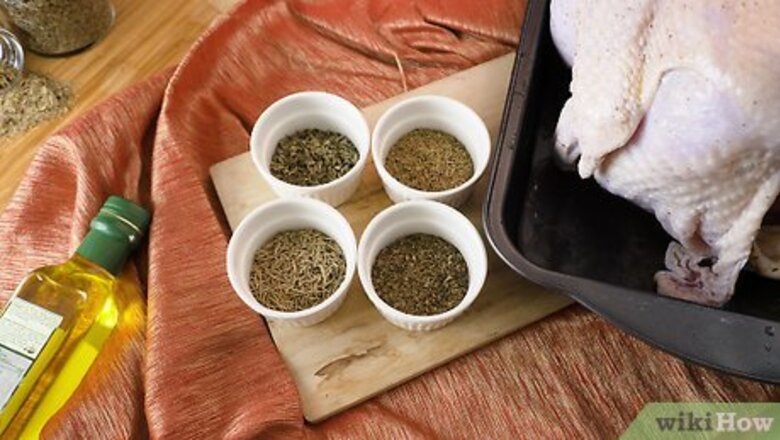
views
Making a Seasoning
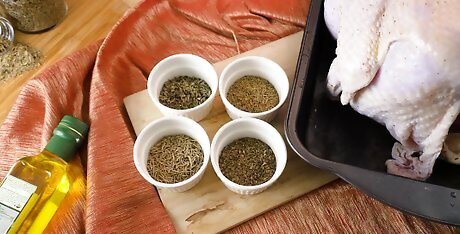
Use a standard Thanksgiving seasoning. If you're making a turkey for Thanksgiving or another holiday, try a standard seasoning with some parsley and sage. This will produce a classic taste for your family to enjoy. In a small bowl, add 1/4 cup of fresh chopped parsley. Then, add one tablespoon each of sage, rosemary, and thyme. Add two tablespoons each of olive oil and melted butter, as well as half a teaspoon of both salt and pepper. The kind of olive oil you use doesn't matter. Mix all your ingredients together until you have an even, uniform mixture.
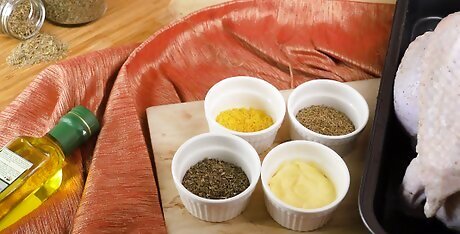
Try a lemon seasoning. If you want something a little different, try a lemon seasoning. This will make for a fresh, savory turkey. Mix 1/4 cup of unsalted butter with a teaspoon of lemon zest. Then, add a teaspoon of chopped thyme and a teaspoon of chopped marjoram. Mix all the ingredients together into a uniform mixture. Mix three tablespoons of room temperature butter with two tablespoons each of rosemary and thyme. Mince three garlic cloves and mix them in with the butter/herb mixture.
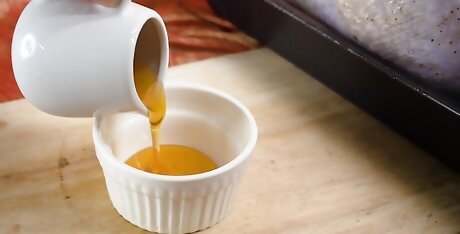
Use a maple syrup glaze. If you want something sweeter, think about maple syrup. A maple syrup glaze can provide a somewhat unexpected but pleasant taste for your turkey. You actually apply this mixture after cooking the turkey for two and a half hours. You will mix two tablespoons of the pan juices with 1/4 cup of maple syrup. Then, rub the mixture all over your turkey. Then, roast your turkey for 15 more minutes to let the flavor set in
Applying Seasoning to the Turkey
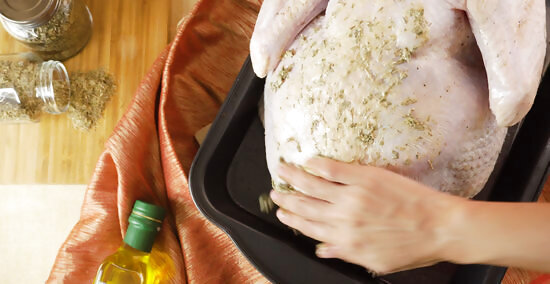
Rub your mixture all over your turkey. Usually, you apply the seasoning before you cook your turkey. However, remember the maple syrup glaze is applied after the turkey's been in the oven. With other glazes, you'll rub the turkey down in the mixture ahead of time. Use enough of any mixture you choose to cover the full surface of the turkey. Rub it all over the outside of the turkey, covering areas like the legs as well.
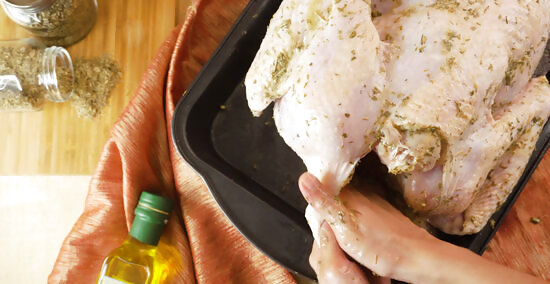
Add your remaining ingredients inside the turkey. If you have any seasoning left over after applying a liberal layer, do not let it go to waste. Instead of discarding leftover seasoning, rub a little bit of it inside the cavity of the turkey. This will make the turkey's seasoning taste a little stronger.
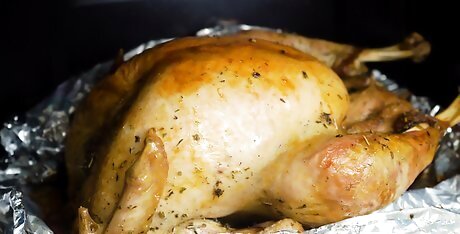
Cook your turkey after seasoning according to your recipe. Once you're seasoning applied, cook your turkey according to your recipe's instructions. Instructions will vary, but turkeys are usually cooked around 325 degrees Fahrenheit (about 163 degrees Celsius) and are cooked for at least a couple of hours. You will need an oven thermometer to make sure your turkey is cooked through. A turkey must have temperature of at least 165 degrees Fahrenheit to be safe to eat.
Assuring a Quality Turkey
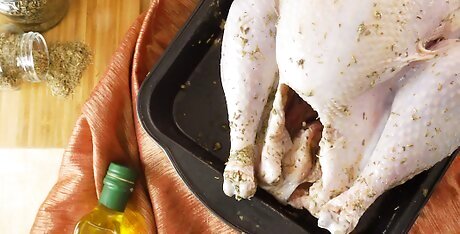
Figure out how much seasoning you need. You may need to make a little more of the seasoning than the recipe instructs if you have a very large turkey. To determine how much seasoning you need, place your turkey in the container you're going to cook it in. Slowly fill the container with water. Keep filling the container until the turkey is completely submerged. Remove the turkey and measure out the water. This is how much seasoning you will need.
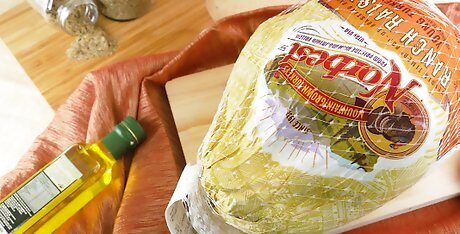
Select a quality turkey to season. Solid seasoning will not make a poor quality turkey taste good. Before you season a turkey, make sure to pick a quality turkey at the store. Go for a turkey between 12 and 20 pounds without artificial flavors or added preservatives.
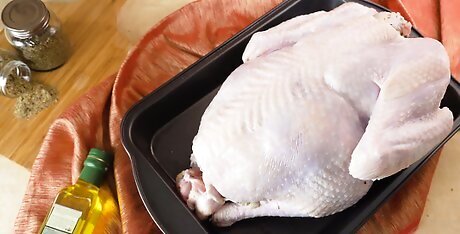
Make sure your turkey is completely thawed before seasoning. If you purchase a turkey that requires thawing, read the package instructions. Make sure you thaw the turkey for as long as necessary. Your turkey will not cook correctly if it's improperly thawed, so give yourself enough time to adequately thaw the turkey.
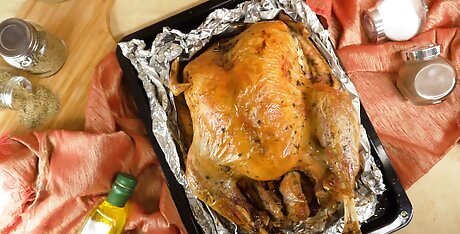
Finished.



















Comments
0 comment